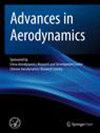Assessing aerodynamic loads on low-rise buildings considering Reynolds number and turbulence effects: a review
IF 2.3
3区 工程技术
Q2 ENGINEERING, MECHANICAL
引用次数: 5
Abstract
This paper presents an extensive review of existing techniques used in estimating design wind pressures considering Reynolds number and turbulence effects, as well as a case study of a reference building investigated experimentally. We shed light on the limitations of current aerodynamic testing techniques, provisions in design standards, and computational fluid dynamics (CFD) methods to predict wind-induced pressures. The paper highlights the reasons for obstructing the standardization of the wind tunnel method. Moreover, we introduce improved experimental and CFD techniques to tackle the identified challenges. CFD provides superior and efficient performance by employing wall-modeled large-eddy simulation (WMLES) and hybrid RANS-LES models. In addition, we tested a large-scale building model and compared the results with published small-scale data. The findings reinforce our hypothesis concerning the scaling issues and Reynolds number effects in aerodynamic testing.考虑雷诺数和湍流效应的低层建筑气动载荷评估综述
本文对考虑雷诺数和湍流效应的设计风压估算的现有技术进行了广泛的回顾,并对一个参考建筑进行了实验研究。我们阐明了当前空气动力学测试技术的局限性,设计标准的规定,以及计算流体动力学(CFD)方法来预测风致压力。重点分析了阻碍风洞法标准化的原因。此外,我们引入了改进的实验和CFD技术来解决已确定的挑战。通过采用壁面大涡模拟(WMLES)和混合ranss - les模型,CFD提供了优越而高效的性能。此外,我们测试了一个大尺度的建筑模型,并将结果与已发表的小尺度数据进行了比较。这些发现强化了我们关于气动测试中尺度问题和雷诺数效应的假设。
本文章由计算机程序翻译,如有差异,请以英文原文为准。
求助全文
约1分钟内获得全文
求助全文

 求助内容:
求助内容: 应助结果提醒方式:
应助结果提醒方式:


